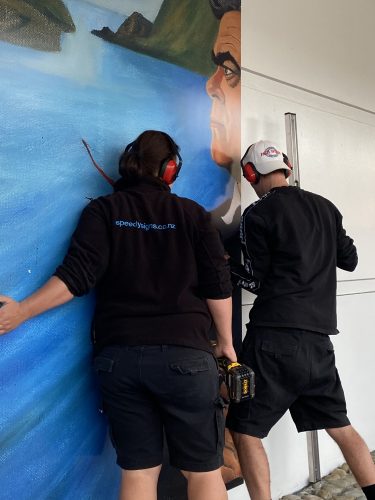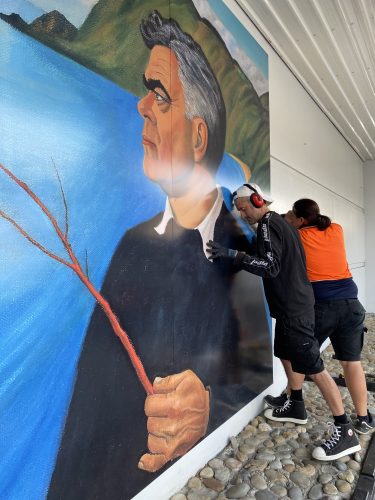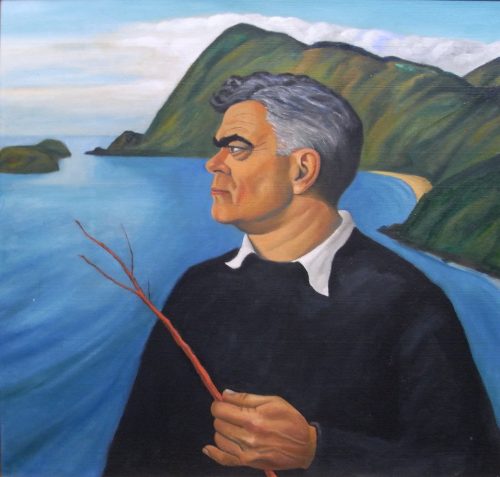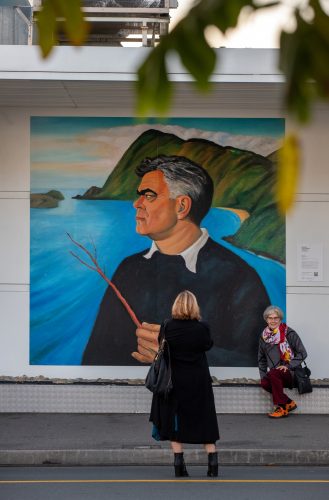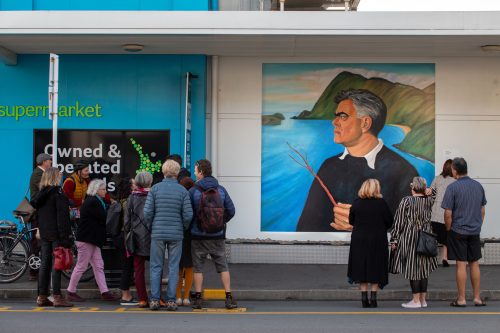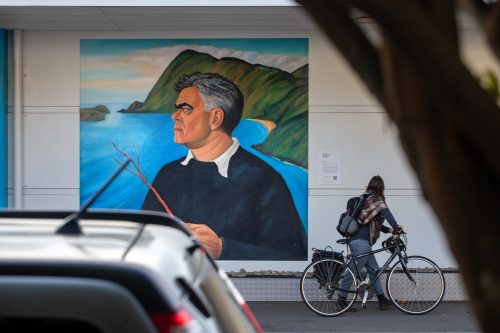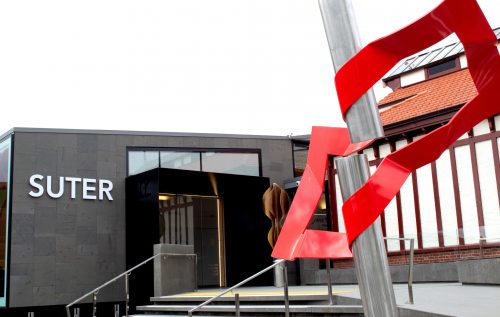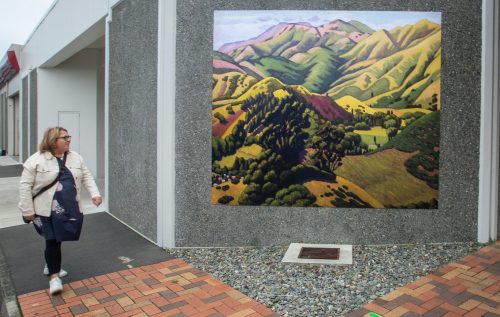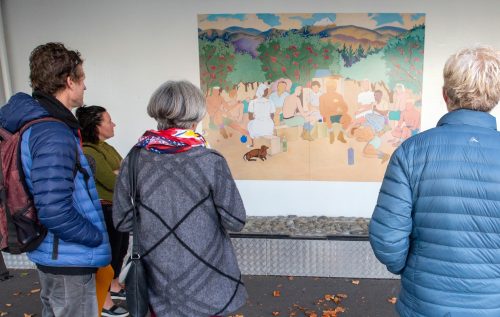WH Allen’s Portrait of Leo Bensemann (1940). Collection of The Suter Art Gallery Te Aratoi o Whakatū: Gifted by the family of Leo Bensemann, from his personal collection, 2013. ACC: 1282.
Leo Bensemann
Born in Takaka in 1912, Bensemann was an artist, printer, typographer, publisher and editor. As a child, his family moved to Nelson, where he attended Nelson College. Alongside his interest in visual arts, Bensemann was a keen sportsman (cricket and rugby) and musician (piano and guitar). As a descendant of German immigrants, he learnt to speak German from his grandmother, and had a great love of German literature, art and music.
In 1931 he moved to Christchurch, finding work as a commercial artist for the printing firm HW Bullivant & Co. Through his meeting poet and printer Denis Glover, Bensemann’s artwork was included in the first publication of the Caxton Club, later to become Caxton Press. Bensemann became known for his bookplate drawings, executed in an idiosyncratic manner, influenced in part by Aubrey Beardsley. His association with Caxton continued for 40 years.
After meeting Rita Angus and sharing a studio with her in Cambridge Terrace, he became part of The Group an informal but influential art association that exhibited annually from 1927 to 1977 and was continuously at the forefront of New Zealand’s avant-garde art scene. Members included Colin McCahon, Doris Lusk, Toss Woollaston, Rita Angus, Philip Trusttum, and Douglas MacDiarmid.
As a painter, Bensemann was notable both for his portraits, especially during the 1930s and 40s, and after 1960, for his landscapes. He was influenced by the German painters Cranach, Holbein and Dürer, and the Japanese woodcut artists Hiroshige and Hokusai.
I have owned quite a few [Japanese prints], most of which I gave away. In the early 1930s I bought two Studio publications on Japanese prints – Hiroshige (1929) and Hokusai (1930). They cost about 5/- each and I believe no art books I have ever bought have given me as much pleasure as these two marvellous books.
In his graphic work, Bensemann unleashed the flamboyant side of his talent, taking inspiration from a wide range of literary sources. His portraits on the other hand, both in pencils and oils, were far more realistic with meticulous craftsmanship. He often placed his portrait subjects against landscape backgrounds. He painted many self-portraits as well as family, friends and colleagues.
His landscapes included locations in Central Otago, the West Coast, Canterbury and Golden Bay, where he began holidaying regularly after 1965. He was particularly drawn to the emerald-green hills and limestone rock outcrops of the Takaka region.
In the 1985 New Year Honours, Bensemann was appointed an Officer of the Order of the British Empire, for services to art, literature and printing. Bensemann died in 1986.
In 2011, Christchurch Art Gallery presented a comprehensive retrospective – Leo Bensemann: A Fantastic Art Venture.
In 2019, Peter Simpson wrote Fantastica: The World of Leo Bensemann. There’s an RNZ interview with Simpson here.
The Group
The Group was an informal but influential art association formed in Christchurch, New Zealand in 1927. Initially begun by ex-students from Canterbury College of Art, its aim was to provide a freer, more experimental alternative to the academic salon painting exhibitions of the Canterbury Society of Arts. The Group exhibited annually for 50 years, from 1927 to 1977, and it was continuously at the forefront of New Zealand art’s avant-garde scene.
Many of the country’s best-known artists were associated at some time with The Group. Among these are Colin McCahon, Doris Lusk, Toss Woollaston, Rita Angus, Leo Bensemann, Philip Trusttum, and Douglas MacDiarmid. The influence of The Group was such that it is occasionally referred to as ‘Bloomsbury South’.
